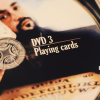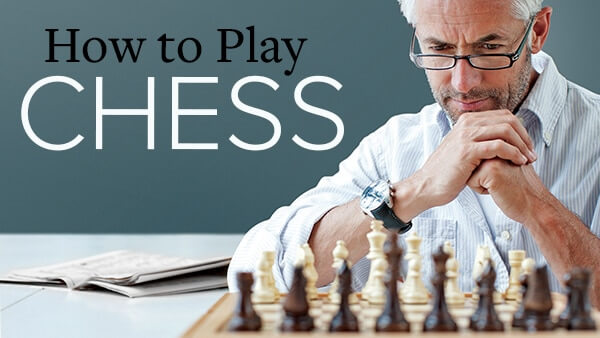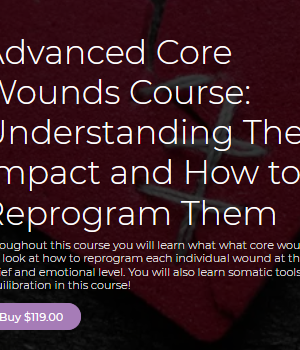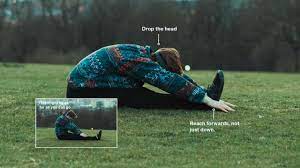How to Play Chess: 24 Lessons from an International Master
$200.00 Original price was: $200.00.$49.40Current price is: $49.40.
Whether you’re a novice or a seasoned player, these 24 lessons on gameplay and strategies will boost your skills and turn you into a more formidable chess player.
File size: 2.32GB
How to Play Chess: 24 Lessons from an International Master
Whether you’re a novice or a seasoned player, these 24 lessons on gameplay and strategies will boost your skills and turn you into a more formidable chess player.
1: The World of Chess
Crossing lines of social class, language barriers, and national boundaries, played in family living rooms and local chess parlors and online games around the world, chess is a truly universal pastime. Discover the basics of the game and how it began; what each piece is worth and how it moves; and the mathematical notation that allows players to record games, learn from mistakes, and improve….
2: Secrets of the Pawns and Knights
Although humble, pawns are the most complex pieces on the chessboard. Meanwhile, the leaping knights are perhaps the strangest pieces. Learn how these two pieces move and what strategies to employ with them to control the board. Look at a few situations that test what you’ve learned….
3: Castling, Checkmate, Chess Engines, Draws
Complete your review of the basics of chess-including how to castle, the difference between checkmate and stalemate, and the etiquette of play. Then shift your attention to some astonishing aspects of the game and find out about simultaneous exhibitions, blindfolded play, and chess computers….
4: Must-Know Tactical Patterns in Chess
Build your arsenal of tactical skills by looking for winning patterns on the board. After covering three go-to punches-pins, skewers, and forks-Mr. Silman turns to decoys, double attacks, discovered attacks, and more. Armed with these patterns of play, you now have a major tactical advantage….
5: Chess Combinations and Kings in Check
Continue your study of patterns-this time with combination moves that require crafty calculations. Whether you’re wondering when (and why) to sacrifice a piece, or you’re looking to trap kings in tight corners, or you simply want to unleash a torrent of carnage on the board, the tactics from this lesson will help you become a more formidable player….
6: Checkmate! Back-Rank, Smothered, and More
Delve into the world of “piece collaboration” -using two or more pieces to win a checkmate. Mr. Silman shows you a number of classic mates that have delighted fans for generations. Not only are these mating patterns flashy and exciting, they will also give you a far deeper understanding of the game as a whole….
7: Checkmate against a Castled King
Castling is an excellent strategy, but a castled king is not invincible. Explore some of the patterns that can be used to checkmate a castled king-particularly using square h7. Look at when to sacrifice a bishop, how to use your queen to go on the hunt, and how pieces must work in partnership for success….
8: Legendary Attacking Greats of Chess
Famous chess players are some of the most fascinating figures in history. Enrich your understanding of tactics by learning about four of the most famous attacking players who ever lived: Paul Morphy, Alexander Alekhine, Mikhail Tal and Garry Kasparov. Examine several of their games to get a feel for their playing style….
9: A Cascade of Short, Brutal Chess Games!
Errors are common among players at all levels. We fall into traps, walk headfirst into an opponent’s tactic, or simply miss a good move or hidden vulnerability. Review several ways a game can go wrong, from the quick “fool’s mate” to many of the short, brutal takedowns from famous matches….
10: Chess Heroes of the Romantic Age
Step back to an era of gaslights and chess cafes in old Europe. The “romantic era of chess” of the 18th and 19th century was filled with raucous characters who employed swashbuckling tactics to please a crowd. Meet three famous players-Joseph Henry Blackburne, Adolph Anderssen, and Baron Ignatz von Kolisch-and learn what made their games so memorable….
11: Open Files and the Positional Rook
Almost everyone enjoys tactics, but tactics are not the most important element of the game. Begin the first of several lessons on positional play and chess strategy, starting with the rooks. Learn why and how to create an open file and employ your rooks to best advantage. See examples of these mighty pieces at work….
12: Pawns: The Positional Soul of Chess
In this lesson, you’ll find out why “pawns are the soul of chess.” Train your eye to see the pawn structures of a game and their strategic implications. After honing your ability to read a position and see patterns, study a few strategies for making the most out of the pawns-including pawn chains, the passed pawn, the Grünfeld Defense center, and more….
13: Positional Weaknesses and Targets in Chess
Continue your study of pawn movements by examining a number of potential weaknesses. Mr. Silman helps you notice and make use of vulnerabilities such as isolated pawns and doubled pawns. By sharpening your powers of observation, your chess game will take a giant leap forward….
14: Closed and Open Positions on the Chessboard
It’s always important to develop your pieces as quickly as possible, but once developed, open and closed board positions require very different strategic approaches. Study these differences and find out how to use your knights, bishops, or rooks for greatest success-and how best to get those pieces into play….
15: Chess Statics vs. Dynamics: An Eternal Battle
Much of chess boils down to the tension between static play versus dynamic play. Static play encompasses the long game and positional advantage, while dynamic play is all about tactics and aggressive attacks. Find out when to rely on each approach….
16: Using Chessboard Imbalances to Create Plans
In this lesson, you’ll begin putting all the pieces together from previous lessons. Learn to read the board for imbalances, and then discover how to put those imbalances to work. A wealth of examples teaches you to understand “the body language of the board”-a skill that separates successful players from their defeated opponents….
17: Legendary Teachers Who Transformed Chess
Meet several key players who advanced the game from the Romantic to the Modern era. In addition to learning about the personalities of players such as Andre Philidor, Wilhelm Steinitz, Siegbert Tarrasch, and Aron Nimzowitsch, you’ll study some of their most interesting games to get a feel for how chess became much deeper than before….
18: Chess Endgames and the King’s Magical Powers
While you must have tactical and positional skills to be a formidable chess player, learning the strategy behind a successful endgame is crucial to bringing your understanding of chess to the next level. This first of three lessons on oft-neglected endgame strategy introduces you to the powers of the king. Mr. Silman shows you how the kings can take over the chessboard….
19: Kings and Pawns in Next-Level Endgames
Continue your study of endgames, especially those involving the king and one or more pawns. Here you’ll find out how to avoid-or create-stalemates and draws, as well as the critical techniques for getting pawns to the end of the board-or blocking those dangerous pawn advances….
20: Triangulation and Two Critical Rook Endgames
Round out your study of endgames with an examination of triangulation, a key tactic for gaining control (called “the opposition”) in a king-versus-king standoff. Then turn to two common rook endgames: the Lucena Position and the Philidor Position. Mr. Silman offers several general rules for handling these situations….
21: Chess Openings: The Right and Wrong WayMany people believe openings are the most important part of the game, but as you’ll learn in this lesson, this belief is wrong on many levels. Here, you’ll encounter a few simple strategies for developing your pieces and getting to the middle of the game. Learn Mr. Silman’s recommended opening repertoire so you can successfully get through the opening with minimum memorization….
22: Chess Psychology and the Known Unknown
Chess is riddled with psychological traps-particularly if you find yourself playing a daunting opponent. Mr. Silman offers insight into several of these traps and helps you maintain your confidence, whether you’re playing a peer on your level or one of the most sophisticated computers on the planet….
23: The Chess Amateur’s Mind
See how amateur chess players tend to approach the game-giving away pieces and neglecting to defend against enemy attacks. By studying several common amateur mistakes, you’ll strengthen your own chess skills and get into the mindset of thinking through your opponent’s best reply to every move….
24: Picking a Chess Hero
As you’ve seen throughout the course, the chess greats all have a unique approach to the game, often rooted in how they understand other players. Round out the course by studying four final champions-Jose Raúl Capablanca, Vera Menchik, Bobby Fischer, and Hou Yifan-to analyze their style of play and enjoy the benefits of thinking about your own favorite chess hero….
Read more here!
Get How to Play Chess: 24 Lessons from an International Master download immediately on AMZLibrary.com!
Be the first to review “How to Play Chess: 24 Lessons from an International Master” Cancel reply
Related products
Personal Development
Personal Development
Personal Development
Personal Development
Libby Crow, Scott Oldford – The Daily Shift 365: Create a Million Dollar Mindset
Personal Development
Personal Development
Personal Development
Personal Development













Reviews
There are no reviews yet.